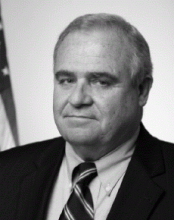G. Edward DeSeve is the Coordinator of the Agile Government Center at the National Academy of Public Administration and an Executive Visiting Fellow at the IBM Center for The Business of Government.
DeSeve has served at all three levels of government and in the private sector. At the federal level, he was a Special Advisor to President Barack Obama charged with implementing the $800 billion American Recovery and Reinvestment Act. He was also Deputy Director for Management and Controller at the Offce of Management and Budget and Chief Financial Officer of the Department of Housing and Urban Development.
At the state and local levels he was a Special Assistant to the Governor of the Commonwealth of Pennsylvania and Director of Finance for the City of Philadelphia. In the private sector, he was a managing director at Merrill Lynch Capital Markets and the founder and president of Public Financial Management—the nation’s largest independent financial advisor to government.
He holds a Bachelor of Science in Industrial and Labor Relations from Cornell University a Master of Public Finance from the Wharton School of the University of Pennsylvania.





